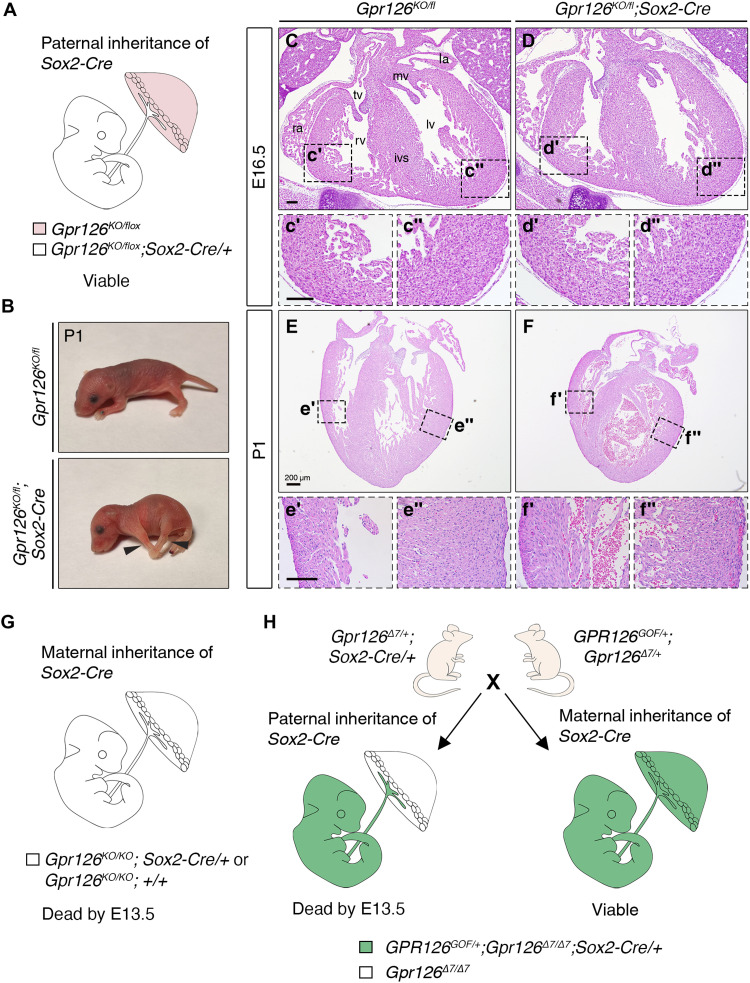Fig. 5.
(A) Representation of the embryonic and extraembryonic genetic constitution of Gpr126fl/fl;Sox2Cre embryos when the Sox2Cre transgene is inherited paternally. Zygotic Sox2Cre expression deletes Gpr126 in the embryo proper and in the embryonic component of the placenta (white). Gpr126 is not inactivated in the maternal component of the placenta (pink). (B) Images of Gpr126KO/fl and Gpr126KO/fl;Sox2Cre mouse pups at P1. Arrowheads point to joint contractures in the forelimbs and hindlimbs of the mutants. (C to F″) H&E staining of transverse heart sections from Gpr126KO/fl and Gpr126KO/fl;Sox2Cre mutant embryos at E16.5 (C to D″) and P1 (E to F″). Bottom panels: High-magnification views of the right ventricle (′) and left ventricle (″) corresponding to the boxed areas in the main panels. Scale bars, 100 μm. (G) Representation of the embryonic and extraembryonic genetic constitution of Gpr126fl/fl;Sox2Cre embryos when the Sox2Cre transgene is inherited maternally. Note Gpr126 inactivation in both the embryo proper and in the placenta. (H) Breeding strategy used to obtain GPR126GOF/+;Gpr126Δ7/Δ7;Sox2Cre/+ embryos. The parental origin of the Cre transgene determines whether forced GPR126GOF expression (green) will take place only in the epiblast (paternal inheritance) or will be widespread in embryonic and extraembryonic tissues (maternal inheritance).

